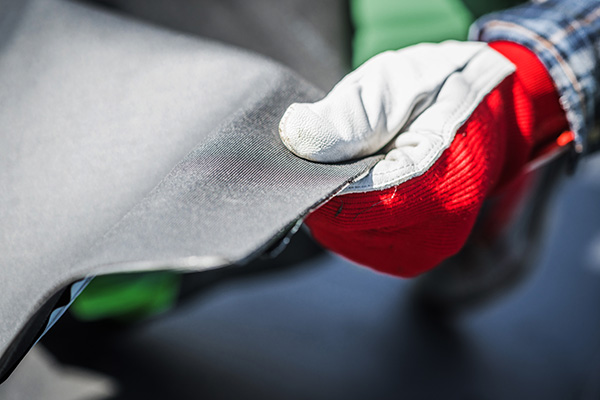Detecting Shrinkage in EPDM Roofing Materials
Author: Dan Stout | August 7, 2024
All roofing materials experience some degree of expansion and contraction. However, shrinkage in EPDM roofing materials can be something more serious and can become a significant problem if left unchecked. Here's a look at what causes this issue, how to identify it and if there's a fix.

What Is EPDM Shrinkage?
Unlike typical roof fluctuation, EPDM shrinkage is a permanent contraction toward the center of the material. It may be helpful to think of an EPDM roof as a very large rubber band. Stretch a rubber band, and it will want to pull back toward its center.
In recent decades, roofing manufacturers have reduced EPDM's vulnerability to shrinkage, but it hasn't been completely eliminated. Shrinkage is often particularly noticeable on older, ballasted roofs where the roof membrane has more room for movement. Fully adhered and mechanically fastened roofs are less susceptible to shrinkage.
Shrinkage is also more noticeable on larger roofs, where larger sheets make shrinkage more dramatic. While 1% shrinkage on a residential rooftop deck might only be a few inches, on a massive warehouse, that same percentage could be a few feet.
Signs of EPDM Shrinkage
Signs of shrinkage appear at the edges of the roof, at walls, along seams and around penetrations. The clearest sign of shrinkage occurs at walls, where it creates an effect called "tenting." This is when the EPDM pulls away from the intersection of the wall and roof deck, creating an air gap that looks like the wall of a tent.
Roof penetrations and membrane seams can also show signs of shrinkage. Look for bubbles, cracks and wrinkles around penetrations. Seams may display those same signs, or in extreme cases the seam may pull apart completely.
When inspecting a roof, remember that the EPDM will shrink toward the center of the sheet, not necessarily the center of the roof. If there's more than one sheet on a roof, they may pull away from each other at the seams. So check all seams and penetrations for signs of shrinkage, not just the roof perimeter.
How to Prevent EPDM Shrinkage
Ideally, the best tactic is to avoid getting shrinkage in the first place. This involves two steps: proper installation, including fastening at joints and seams, and repairing shrinkage that does occur.
The good news is that modern EPDM is more shrink-resistant than ever before. Simply following the manufacturer's instructions will typically result in a roof that has acceptable shrinkage. Some installation instructions require the use of products like pressure-sensitive RUSS (Reinforced Universal Securement Strip) to add additional strength at walls, curbs and expansion joints.
Another important prevention step is considering whether the roof will face any extreme weather conditions. Excessive sun exposure can accelerate shrinkage, as the EPDM reacts to the heat and UV rays. If a building is exposed to large amounts of direct sunlight, consider a light-colored roof coating to reduce UV exposure and keep the building cooler.
How to Repair EPDM Shrinkage
As always, it's important to take each roof repair on a case-by-case basis. On an older roof with extreme shrinkage, for example, repairs may not be feasible.
The most common repair technique for this issue involves releasing the additional tension caused by the shrinkage. Cut the EPDM, allow it to relax to its natural size, then patch any gaps with additional EPDM. If there's tenting at a wall, the sheet should be securely fastened at the base of the joint, with a new sheet of EPDM lapping over it from the wall. Penetrations should be re-flashed as needed.
Benefits of Battling Shrinkage
Repairing shrinkage promptly (or avoiding it in the first place) extends the life of a roof. A long-lasting roof naturally means less expense in labor and materials, but for commercial operations it also means less lost revenue, as a large roofing job may disrupt operations, parking or production.
Proper roof maintenance requires time and labor, but that relatively small investment can pay massive dividends in the long run. Residential customers should inspect their roof once or twice a year, while commercial customers are often better off subscribing to a maintenance plan.
If you need guidance on selecting EPDM roofing materials, or on how to identify and repair shrinkage, talk to an experienced roofing vendor to find the best balance of price, durability and performance for your situation.